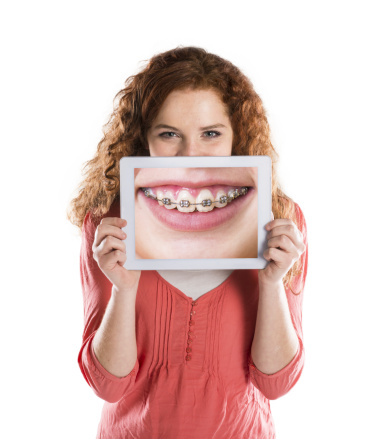New Cement Fights Plaque During Orthodontic Treatment
Antibacterial orthodontic cement offers promise for improving oral health of patients wearing traditional braces.

The effectiveness of the new cement was described in a presentation at the recent Annual Meeting & Exhibition of the American Association for Dental Research. The presentation detailed a study conducted by researchers at the University of Maryland, Baltimore, in which an antibacterial agent was mixed into regular orthodontic cement at concentrations of 1.5 and 3 percent. The researchers found that the antibacterial agent did not affect the strength of the cement’s bond, but did deliver significant plaque-fighting benefits.
The 3 percent mixture was deemed the most effective. Using this orthodontic cement mixture reduced metabolic activity in plaque biofilm by 66 percent and reduced the total population of micro-organisms by 88 percent. Even more encouragingly, the population of the specific bacteria that contribute most significantly to tooth decay, mutans streptococci, was reduced by 98 percent.
Oral Care Tips for Traditional Braces
Of course, this new antibacterial orthodontic cement is not yet readily available. In the meantime, here are some tips that will help individuals wearing braces take excellent care of their teeth.
Avoid chewy or sticky foods: Any type of food that tends to want to stick to teeth should be avoided, not only because these foods tend to promote tooth decay but also because they could potentially yank a bracket loose from your tooth.
Rinse often to dislodge food bits: Rinsing after eating or drinking is always a good idea because it helps remove bits of food that bacteria could feed on and also changes the pH of your mouth. It’s especially important to rinse when you’re wearing braces because you’ll tend to get lots of food stuck in your teeth each time you eat.
Use a wire brush to remove gunk: Special cone-shaped wire brushes are helpful in dislodging big chunks of food and gunk from around brackets and wires. Your orthodontist will typically give you one of these brushes—be sure to replace it when it starts to get old.
Brush from above and below the brackets: When you brush, it’s important to angle the toothbrush so that you brush first from above and then from beneath to help remove plaque around all sides of the brackets.
Don’t use whitening toothpaste: It’s possible that using a whitening toothpaste could cause the areas beneath your brackets to look darker than your teeth when you get your braces off. In order to avoid a two-tone look, use a regular toothpaste and also avoid staining agents like coffee, tea, and dark soda.
Thread floss beneath the wires: Flossing with braces is a real pain but it is vital for your oral health. You’ll need to find a way of getting the floss beneath the wires of your braces, either using a special threader floss that is stiff on one end or using a threading tool and regular floss.




